2013
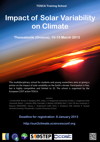 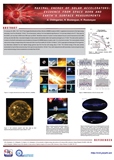 |
Impact of solar variability on the Earth's climate
DATES:10-15 March 2013 LOCATION: Greece, Thessaloniki This one-week school aims at giving young scientists a primer on the impact of solar variability on the Earth's climate. This a timely but also controversial topic that is of major scientific importance. Progress on this issue has been slow, partly because of the lack of interactions between different communities. This is precisely why this school will address the Sun-climate connection in a highly multidisciplinary fashion, by offering the students a panel of lectures given by experts coming from different communities. The program of the conference you can download here.
Authours: A. Chilingaryan, K. Bostanjyan, H. Rostomyan
On January 20, 2005, 7:02-7:04 UT the Aragats Multidirectional Muon Monitor (AMMM) located at 3200 m registered enhancement of the high energy secondary muon flux (threshold ~5 GeV). The enhancement, lasting 3 min has statistical significance of ~4? and was related to the X7.1 flare seen by the GOES, and very fast (>2500 km/s) CME seen by SOHO. Worldwide network of neutron monitors detects Ground Level Enhancements (GLE) #69 arriving very fast after flare; recovered energies of solar protons demonstrate rather hard spectra prolonged up to 10 GeV. The solar proton spectrum incident on the Earth's atmosphere was simulated and transport till AMMM detector located under 14 m of soil and concrete. The most probable minimal solar proton energy corresponding to the measured 5 GeV muon flux is within 20-25 GeV. On March 7, 2012 Large aperture telescope of Fermi gamma-ray observatory detected the ever highest energy gamma rays from the Sun with energy about 4 GeV. The minimal energy of the solar protons accelerated during the flare and producing 4 GeV gamma rays should be ~25 GeV. Thus, both measurements with secondary muons and gamma rays prove maximal energy of solar accelerators not smaller than 25 GeV.
Website:
http://sun2climate.sciencesconf.org/
DATES: April 07 – 12: 2013LOCATION: Austria Center Vienna (ACV) in Vienna, AustriaThe program you can download following the link . Download... The EGU General Assembly 2013 will bring together geoscientists from all over the world into one meeting covering all disciplines of the Earth, Planetary and Space Sciences. Especially for young scientists, it is the aim of the EGU to provide a forum where they can present their work and discuss their ideas with experts in all fields of geosciences. The assembly is open to the scientists of all nations. A. Chilingarian "Detection of runaway electrons – a journey 100 years long "
Website: http://www.egu2013.eu
|
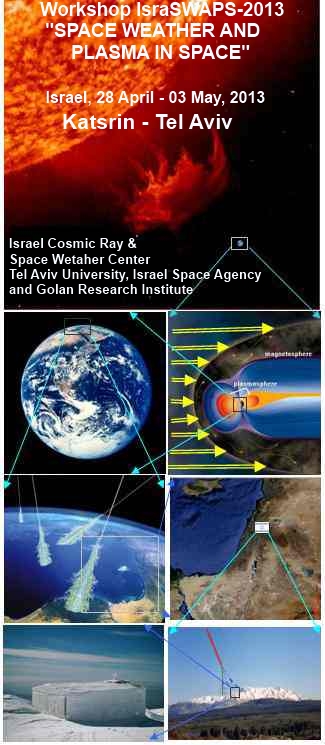 |
Space Weather And Plasma in Space
DATES: 27 April-03 May Location : Tel Aviv University
|
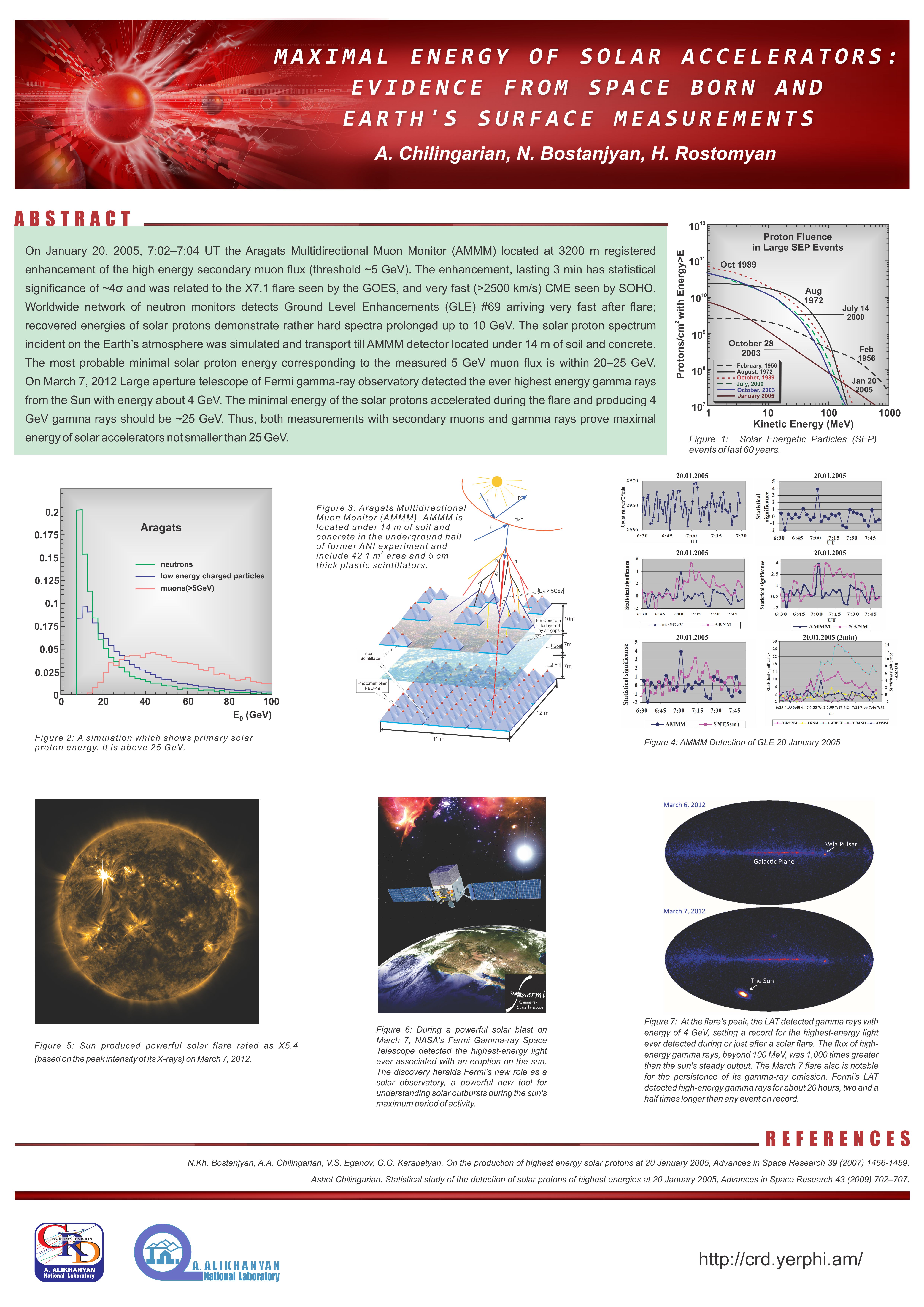 |
American Geophysical Union - Meeting of the Americas DATES: 14 - 17 May 2013Location : Cancun, México
Authours: A. Chilingaryan, K. Bostanjyan, H. Rostomyan
On January 20, 2005, 7:02-7:04 UT the Aragats Multidirectional Muon Monitor (AMMM) located at 3200 m registered enhancement of the high energy secondary muon flux (threshold ~5 GeV). The enhancement, lasting 3 min has statistical significance of ~4? and was related to the X7.1 flare seen by the GOES, and very fast (>2500 km/s) CME seen by SOHO. Worldwide network of neutron monitors detects Ground Level Enhancements (GLE) #69 arriving very fast after flare; recovered energies of solar protons demonstrate rather hard spectra prolonged up to 10 GeV. The solar proton spectrum incident on the Earth's atmosphere was simulated and transport till AMMM detector located under 14 m of soil and concrete. The most probable minimal solar proton energy corresponding to the measured 5 GeV muon flux is within 20-25 GeV. On March 7, 2012 Large aperture telescope of Fermi gamma-ray observatory detected the ever highest energy gamma rays from the Sun with energy about 4 GeV. The minimal energy of the solar protons accelerated during the flare and producing 4 GeV gamma rays should be ~25 GeV. Thus, both measurements with secondary muons and gamma rays prove maximal energy of solar accelerators not smaller than 25 GeV.
Website: http://moa.agu.org
|
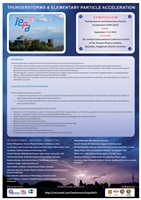 |
Symposium Thunderstorms and Elementary Particle Acceleration (TEPA-2013)
DATES: September 9-13: 2013
LOCATION: Nor Amberd International Conference Centre of the Yerevan Physics Institute, Byurakan, Aragatsotn District, Armenia The aim of the Symposium: To organize a large forum for discussing thunderstorm correlated observations of particle fluxes in the atmosphere and space and models of high energy phenomena originated in the atmosphere; To discuss possible directions for the advancement in research, and for international cooperation between scientific groups using different experimental methods. Website: http://crd.yerphi.am/Conferences/tepa2013/home
|
| |
European Space Weather Week in Belgium
DATES: November 18-22: 2013
LOCATION: Antwerp, Belgium
The 10th Edition of the European Space Weather Week will take place on 18-22nd November 2013 in Belgium. The ESWW will again adopt the central aim of bringing together the diverse groups in Europe working on different aspects of Space Weather. This includes but isn't limited to the scientific community, the engineering community, applications developers, service providers and service end users. The meeting organisation will again be coordinated by the Belgian Solar-Terrestrial Centre of Excellence (STCE), ESA and the Space Weather Working Team. The local organisation will be done by the STCE.
Conveners: A.Chilingarian, K.Kudela Ground based cosmic ray particle detectors measure time series of secondary particles generated through the impact of galactic ions and solar neutrons on the atmosphere. More...
Website: http://www.stce.be/esww10/
|
